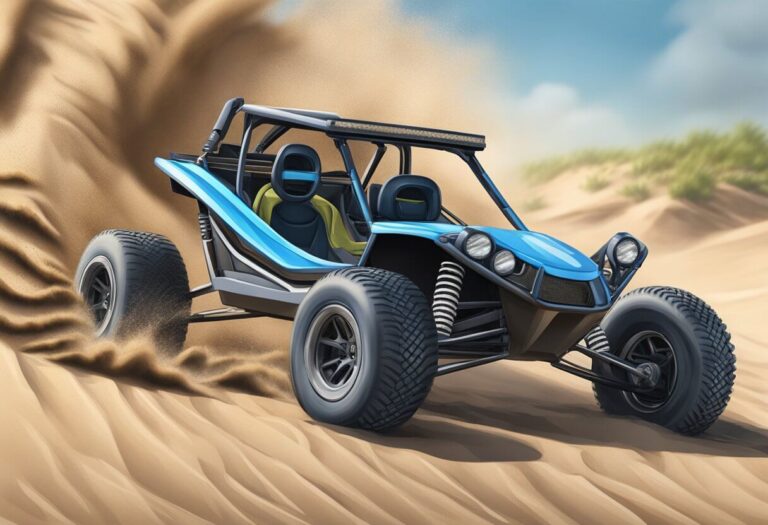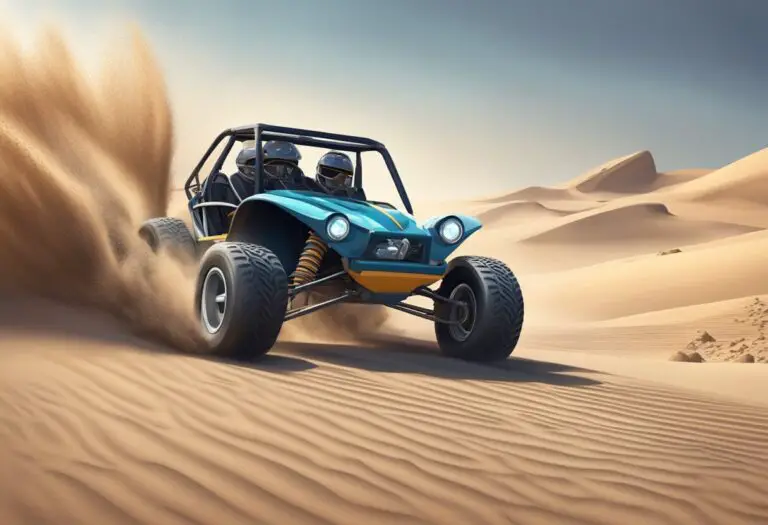Cox Dune Buggy Tires: The Best Options for Off-Road Adventures

Cox Dune Buggy Tires are an essential part of the Cox Dune Buggy, which is a popular gas-powered toy car manufactured by Cox. The Dune Buggy is a classic toy car that has been around since the 1970s and has been enjoyed by children and adults alike. The tires of the Dune Buggy are an important component that is responsible for its smooth performance on different terrains.
The tires of the Cox Dune Buggy are unique and have a distinctive tread pattern that provides excellent traction on sand, dirt, and other rugged surfaces. The tires are made of high-quality rubber that is durable and long-lasting. The rear tires of the Dune Buggy are larger than the front tires, which gives it a unique look and improves its performance.
Key Takeaways
- Cox Dune Buggy Tires are an essential component of the popular gas-powered toy car manufactured by Cox.
- The tires have a unique tread pattern that provides excellent traction on different terrains.
- The high-quality rubber used in the tires makes them durable and long-lasting.
History of Cox Dune Buggy Tires
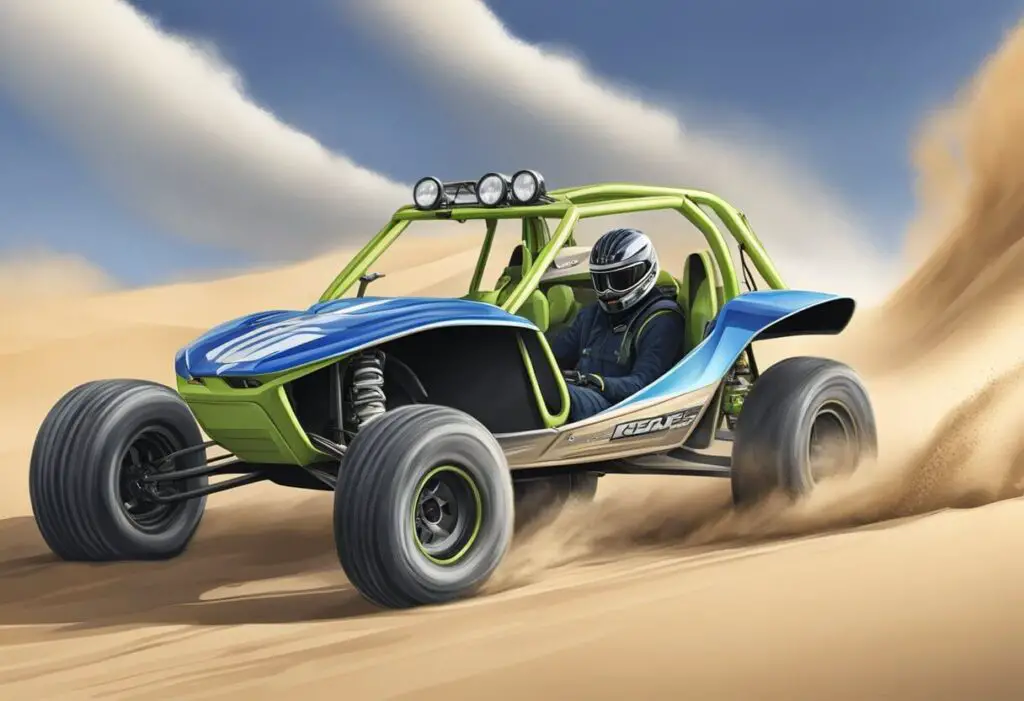
Cox Dune Buggies were popular toys in the 1970s. These gas-powered buggies were known for their unique design and impressive performance. One of the most important parts of the Cox Dune Buggy was its tires.
The original tires on the Cox Dune Buggy were made of rubber and had a unique tread pattern. The tires were designed to provide excellent traction on sand and other loose surfaces. Over time, the rubber on the tires would wear down, and the tread pattern would become less effective.
Many Cox Dune Buggy owners have struggled to find replacement tires for their vintage toys. The original tires are no longer being produced, and finding a set in good condition can be difficult. Some collectors have resorted to using modern RC car tires as replacements, but these tires often do not fit properly and can affect the performance of the buggy.
Fortunately, there are some companies that specialize in creating replica Cox Dune Buggy tires. These tires are made from the same materials as the original tires and feature the same tread pattern. They are designed to fit perfectly on Cox Dune Buggies and provide the same level of performance as the original tires.
Types of Cox Dune Buggy Tires
All-Terrain Tires
All-terrain tires are designed to perform well on a variety of surfaces, including dirt, gravel, and pavement. These tires typically have a more aggressive tread pattern than standard road tires, which helps to improve traction and handling in off-road conditions. Cox dune buggy all-terrain tires are a popular choice for those who want to explore different terrains.
Sand Paddle Tires
Sand paddle tires are designed specifically for use in sandy environments, such as beaches or deserts. These tires have a unique paddle-like tread pattern that helps to provide traction in loose sand. Cox dune buggy sand paddle tires are a great choice for those who want to take their dune buggy to the beach or explore sand dunes.
Mud Tires
Mud tires are designed to provide maximum traction in muddy conditions. These tires typically have a wider tread pattern than other types of tires, which helps to improve grip in slippery conditions. Cox dune buggy mud tires are a great choice for those who want to go off-roading in muddy conditions.
Features of Cox Dune Buggy Tires
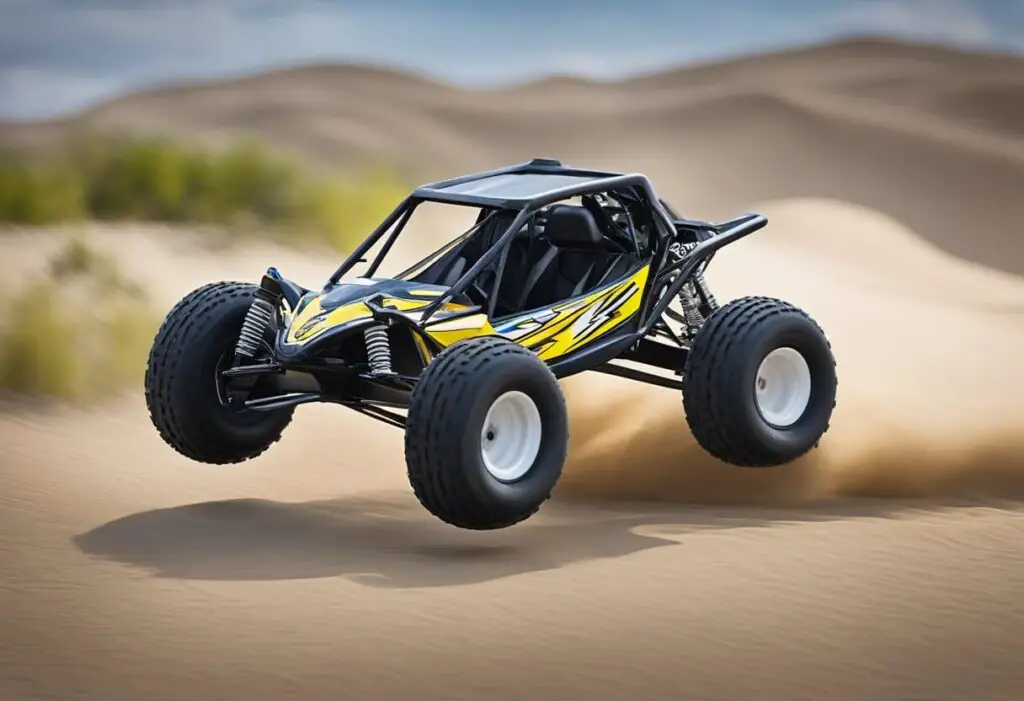
Cox Dune Buggy Tires are an essential part of the vehicle that ensures smooth and safe riding on rough and uneven terrains. The following are some of the features of Cox Dune Buggy Tires that make them unique and efficient.
Tire Tread Patterns
Cox Dune Buggy Tires come with a unique tread pattern that ensures maximum traction and grip on sandy and rocky terrains. The tread pattern is designed to prevent slipping and sliding, making it easier to handle the vehicle in challenging conditions. The tire tread pattern also helps to disperse water and mud, ensuring a smooth ride even in wet conditions.
Durability and Materials
Cox Dune Buggy Tires are made of high-quality materials that make them durable and long-lasting. The materials used in making the tires are resistant to wear and tear, ensuring that they can withstand harsh conditions without getting damaged. The tires are designed to be puncture-resistant, reducing the risk of flats and blowouts.
Tire Size and Fit
Cox Dune Buggy Tires come in a variety of sizes to fit different vehicles. The size of the tire is essential in ensuring that the vehicle can handle different terrains with ease. The tires are designed to fit snugly on the rims, reducing the risk of slipping and sliding. Cox Dune Buggy Tires are easy to install and can be changed quickly in case of a flat or blowout.
Cox Dune Buggy Tires ensure a smooth and safe ride on rough terrain. Their tread pattern, materials, and fit make these tires efficient and reliable.
Performance Considerations
When it comes to choosing the right tires for your Cox dune buggy, there are a few key performance considerations to keep in mind. In this section, we’ll explore the importance of traction and grip, handling and stability, and air pressure and maintenance.
Traction and Grip
One of the most important factors to consider when selecting dune buggy tires is traction and grip. Tires with a wider tread pattern tend to provide better traction on sand and other loose surfaces, while those with a narrower tread pattern tend to be better suited for hard-packed terrain.
Handling and Stability
Another important consideration when selecting dune buggy tires is handling and stability. Tires with a lower profile and stiffer sidewalls tend to offer better handling and stability at higher speeds, while those with a higher profile and more flexible sidewalls tend to provide a smoother ride at lower speeds.
Air Pressure and Maintenance
Proper air pressure and maintenance are also crucial to the performance of your dune buggy tires. Overinflated tires can lead to a harsh ride and reduced traction, while underinflated tires can cause excessive wear and poor handling. It’s important to check your tire pressure regularly and adjust it as needed to ensure optimal performance.
In addition to monitoring air pressure, regular maintenance such as tire rotation and alignment can help extend the life of your dune buggy tires and ensure optimal performance. By keeping these performance considerations in mind, you can select the right tires for your Cox dune buggy and enjoy a safe and enjoyable off-road experience.
Buying Guide
Compatibility with Vehicle
When shopping for Cox dune buggy tires, it is important to consider compatibility with the vehicle. The tires should fit the vehicle properly, and they should be able to handle the weight and size of the buggy. It is recommended to check the manufacturer’s specifications to ensure that the tires are compatible with the vehicle. Additionally, it is important to consider the terrain where the vehicle will be driven. Tires that are designed for sand may not be suitable for other types of terrain.
Price Comparison
Price is an important consideration when shopping for Cox dune buggy tires. It is recommended to compare prices from different retailers to find the best deal. However, it is important to keep in mind that the cheapest option may not always be the best. It is important to consider the quality of the tire and the reputation of the brand. Additionally, it is recommended to look for deals and discounts, such as sales or coupons, to save money.
Warranty and Brand Reputation
When shopping for Cox dune buggy tires, it is important to consider the warranty and brand reputation. A good warranty can provide peace of mind and protection in case of defects or other issues with the tire. Additionally, it is recommended to choose a brand with a good reputation for quality and reliability. This can help ensure that the tire will perform well and last a long time.
Installation Tips
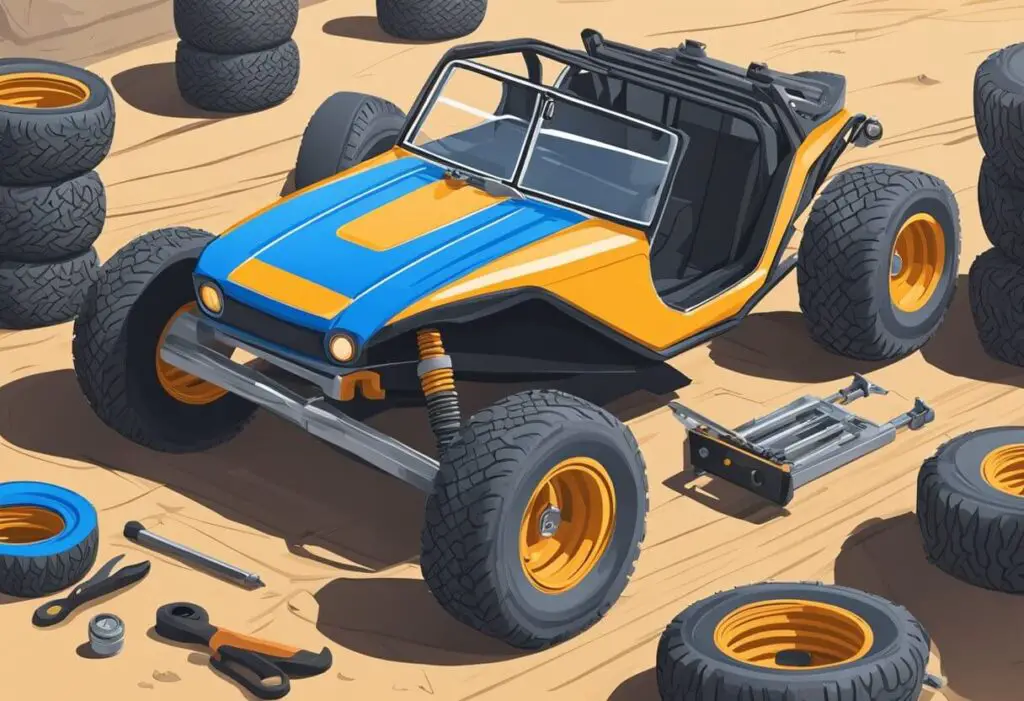
Installing new tires on a Cox Dune Buggy can be a bit tricky, but with the right tools and techniques, it can be done smoothly. Here are some tips that can help you install new tires on your Cox Dune Buggy:
Use Hot Water
One of the easiest ways to install new tires on a Cox Dune Buggy is to use hot water. Heat a pan of water to 200 degrees Fahrenheit and remove it from the heat source. Drop the wheel assembly in the pan and let it soak for 1 minute. Remove it from the pan (use caution, it will be hot!) and carefully try to pry/pull the rim parts apart. This should make it easier to install new tires on the wheel.
Install the Spacer
Before installing the new wheel, make sure to reposition the keyway on the axle. Install the spacer you removed from the old wheel on the side next to the valve stem of the new wheel. This will help to keep the new wheel in place and prevent it from sliding around.
Comparison of Tires
When installing new tires on a Cox Dune Buggy, it can be helpful to compare the new tires to the original ones. Here’s a side by side comparison of the original tire and the replacement. The original doesn’t look that bad in this photo, but that’s only because it was boiled and then inserted a ring of EPP foam hoping to get the shape back.
Cox Bug-Buggy Rear Wheel Outer Hub
If you need to build a replacement wheel for your Cox Baja Bug or Dune Buggy, you can use the Cox Bug-Buggy Rear Wheel Outer Hub. This can be used along with other rear wheel parts to build a replacement wheel. Another option is to visit a hobby shop or look for original tires that fit like the originals.
Maintenance and Care
Maintaining and caring for Cox dune buggy tires is essential to ensure they last longer and perform better. Proper maintenance and care can also prevent accidents and improve the overall driving experience. Here are some tips on how to maintain and care for your Cox dune buggy tires:
Check Tire Pressure
It is crucial to check the tire pressure regularly to ensure the tires are properly inflated. Overinflated or underinflated tires can cause poor handling, premature wear, and blowouts. The recommended tire pressure can be found in the owner’s manual or on the tire sidewall. Use a tire pressure gauge to check the pressure and adjust it if necessary.
Inspect Tires
Regularly inspect the tires for any signs of damage, such as cuts, punctures, or cracks. Damaged tires should be replaced immediately to prevent accidents. Also, check the tread depth and wear pattern. Uneven wear can indicate alignment or suspension problems that need to be addressed.
Clean Tires
Cleaning the tires regularly can help prevent buildup of dirt, grime, and other contaminants that can damage the rubber. Use a mild soap and water to clean the tires, and avoid using harsh chemicals or abrasive cleaners that can cause discoloration or cracking.
Store Tires Properly
When storing the dune buggy for an extended period, it is essential to store the tires properly. Clean the tires and deflate them to the recommended pressure. Store them in a cool, dry place away from direct sunlight and sources of heat and ozone, which can cause the rubber to deteriorate.
By following these tips, owners can ensure their Cox dune buggy tires last longer and perform better, providing a safer and more enjoyable driving experience.
Safety Precautions
When it comes to driving a Cox dune buggy, safety should always be a top priority. Here are some safety precautions to keep in mind:
- Always wear a helmet: Wearing a helmet is essential when driving any type of vehicle, including a dune buggy. A helmet can protect your head in case of an accident and prevent serious injuries.
- Check the tires before driving: It’s important to check the condition of your dune buggy’s tires before driving. Make sure they are properly inflated and have enough tread. If the tires are worn out or damaged, replace them before hitting the road.
- Drive at a safe speed: Cox dune buggies are designed for off-road use, but that doesn’t mean you can drive them recklessly. Always drive at a safe speed and stay in control of the vehicle.
- Avoid steep inclines: Cox dune buggies are not designed to climb steep inclines. Avoid driving on steep hills or inclines to prevent accidents.
- Keep a safe distance: When driving a dune buggy, keep a safe distance from other vehicles and objects. This will give you enough time to react in case of an emergency.
By following these safety precautions, you can enjoy driving your Cox dune buggy while minimizing the risk of accidents and injuries.
Environmental Impact
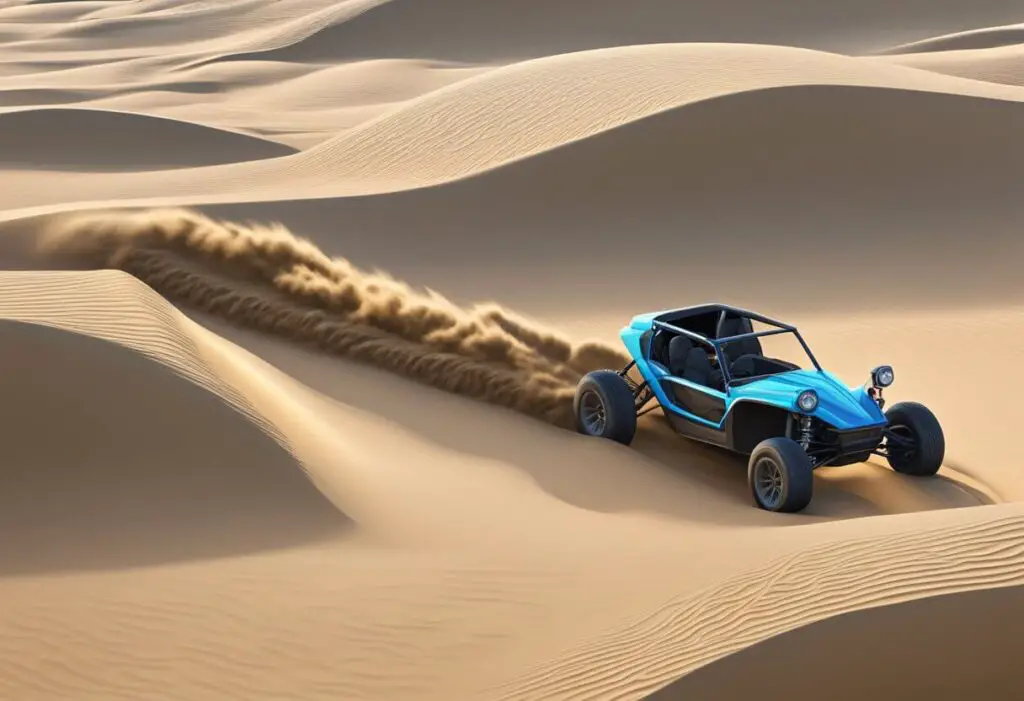
The environmental impact of Cox dune buggy tires is a concern that should not be overlooked. As with any vehicle tire, the wear and tear of Cox dune buggy tires can contribute to pollution.
According to a 2017 study, tire particles account for five to ten percent of ocean plastic pollution. Tire pollution contributes to the problem of both microplastic and nanoplastic pollution. Microplastics are smaller than 5 millimeters.
One way to reduce the environmental impact of Cox dune buggy tires is to properly dispose of them. Tires should not be disposed of in landfills or burned. Instead, they should be recycled or repurposed.
Another way to reduce the environmental impact of Cox dune buggy tires is to choose tires with a longer lifespan. Tires with a longer lifespan will need to be replaced less frequently, reducing the amount of tire waste.
All in all, it is important to be mindful of the environmental impact of Cox dune buggy tires and take steps to reduce it. By properly disposing of tires and choosing tires with a longer lifespan, individuals can help reduce the amount of tire pollution in the environment.


